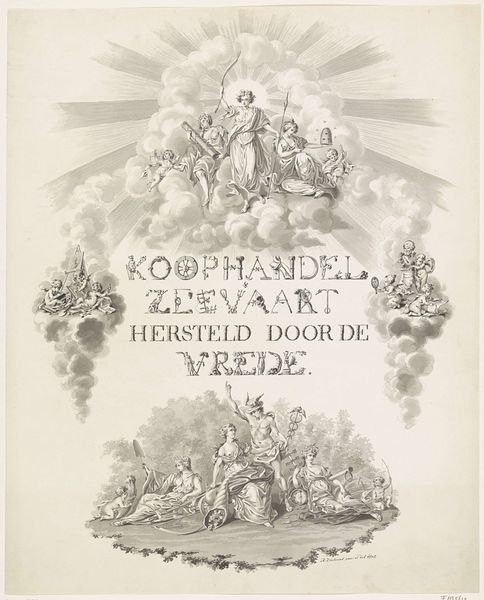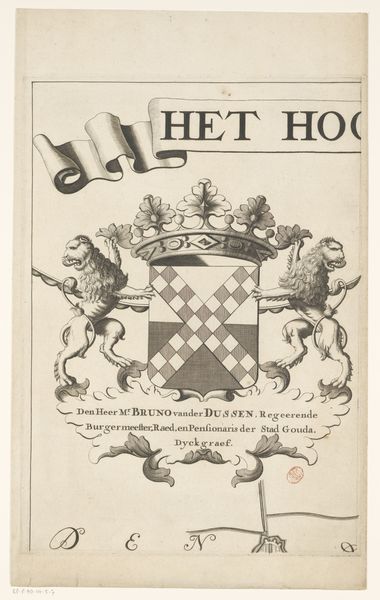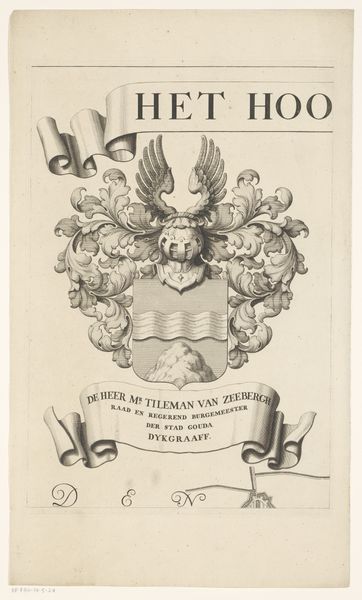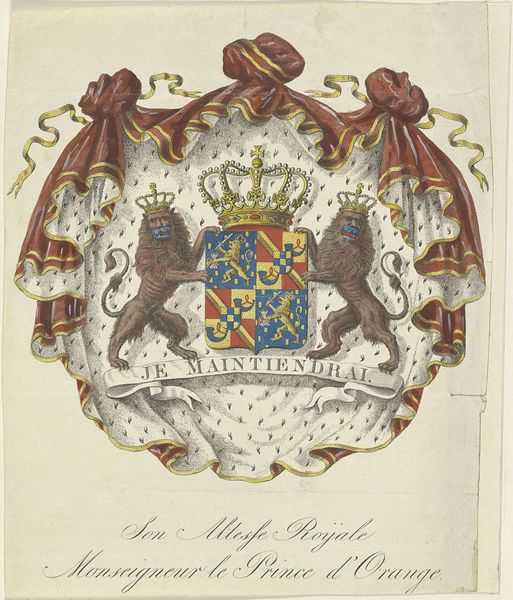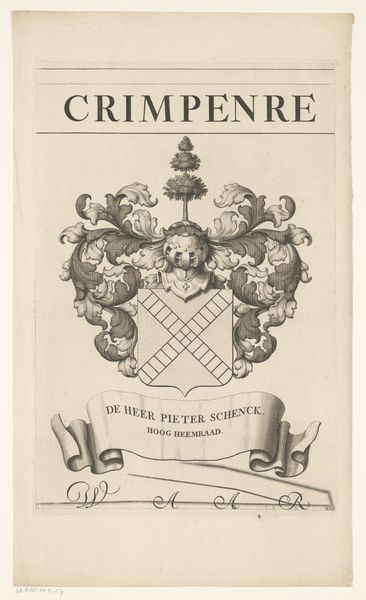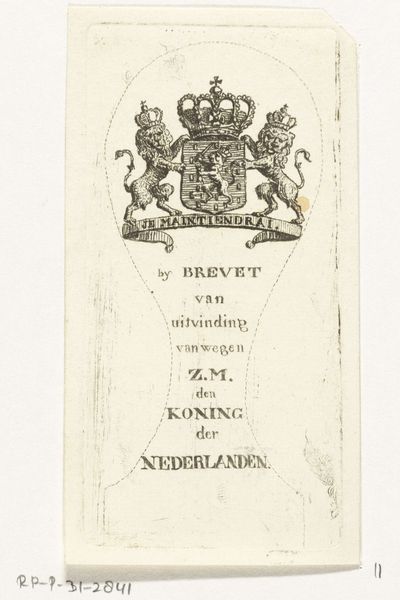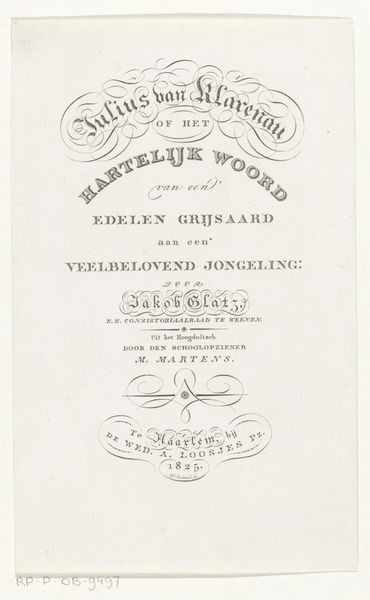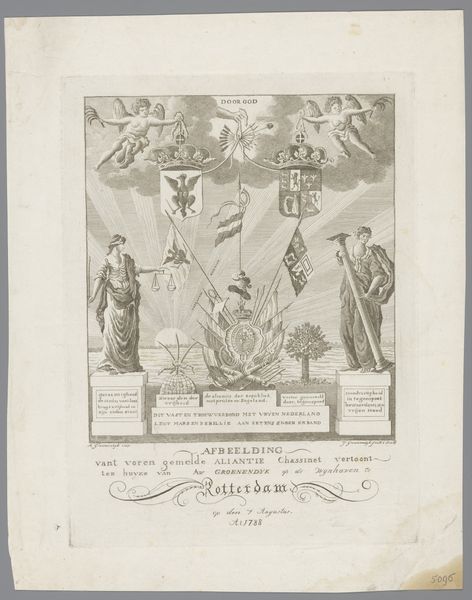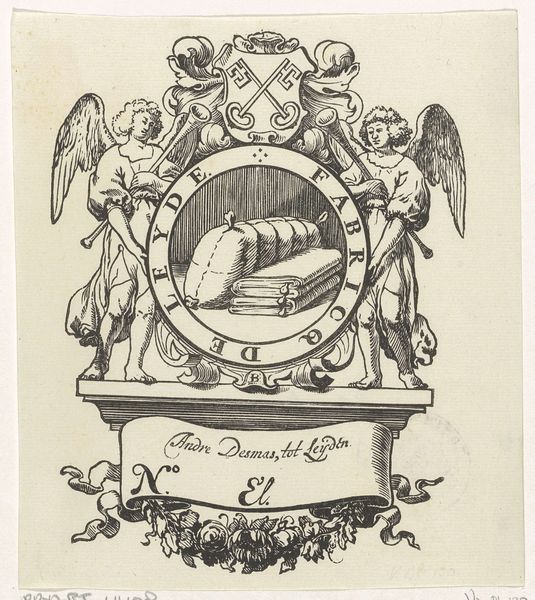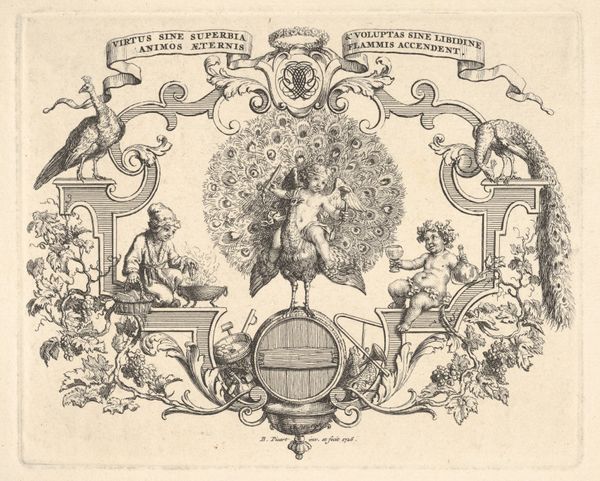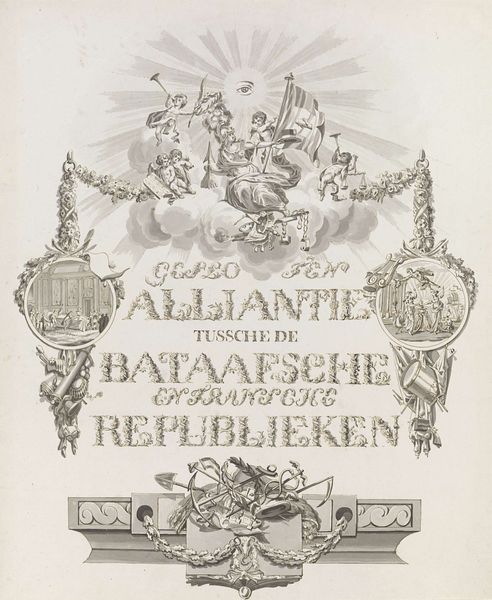
Gedenkplaat voor de stichting van de Bataafse Republiek op 19 januari 1795 1795
0:00
0:00
Dimensions: height 560 mm, width 420 mm
Copyright: Rijks Museum: Open Domain
Curator: This print, titled "Gedenkplaat voor de stichting van de Bataafse Republiek op 19 januari 1795," commemorates the founding of the Batavian Republic. It's an engraving from 1795, now residing in the Rijksmuseum. What are your immediate impressions? Editor: Well, the sheer amount of symbolic paraphernalia is immediately striking. It feels less like a celebration and more like an inventory. Like someone made a list of revolutionary elements and then just, well, glued them onto a page. Curator: An interesting observation! It's true; there’s a very self-conscious use of symbols here, very much in line with the Neoclassical style. Look at the central scene—the figures representing Liberty and Justice—and how they’re framed within that medallion. There's a real desire to present this new republic as grounded in Enlightenment ideals. Editor: And grounded perhaps a little too formally? I'm drawn to the lower register, that garland with the farming tools and seafaring equipment, that suggests a social base for this republic based in material production. To me, that is where things become a bit more tangible and hints at the real labor that goes into nation-building. The flags at the top read to me like, “we know the words, let's just see if the work supports those concepts, those promises." Curator: Precisely. That combination, the juxtaposition of high ideals with more earthly concerns, that feels very human. Do you get any sense of where this was supposed to function in society? It seems quite polemical and self-consciously public in ways. Editor: Yes, exactly. The use of print as a medium implies wider accessibility, broader appeal than a one-off painting or drawing. And its connection to typography emphasizes dissemination and reproducibility: pamphlets, posters, newspapers… So, the very materiality of it implies circulation in public spaces. This isn't a museum piece; it’s supposed to be out there, sparking conversations, rallying support. The question, though, remains, to what degree? Curator: Food for thought, indeed! Thanks. It is useful to explore how something created with such aspiration operates at that street level where meaning meets matter. Editor: Definitely. Thinking about the labor behind this artwork gives a broader context, one that pushes past those pristine ideals. It shifts our perspective.
Comments
No comments
Be the first to comment and join the conversation on the ultimate creative platform.
